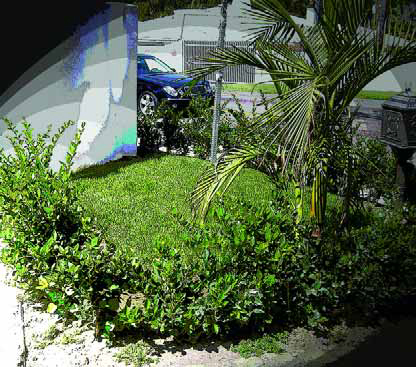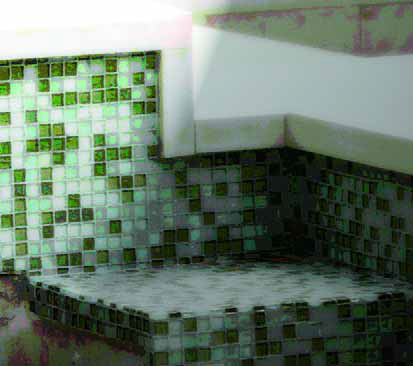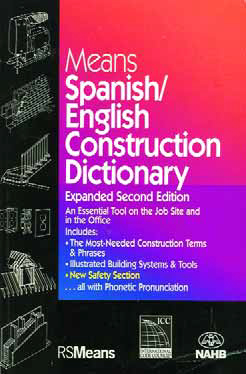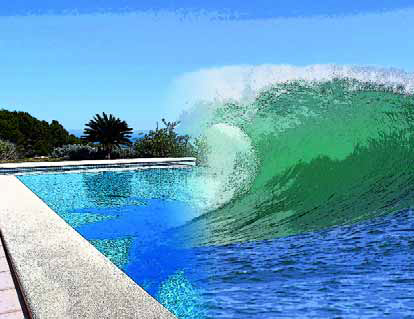WaterShapes
I'm not a big believer in conformity, strict rules and absolutes, but sometimes in my travels I'll come across something that, well, is just wrong. These aren't matters of taste, style, or visual appeal: What I see is just plain wrong! Whether we classify ourselves as watershapers or landscape professionals, we collaborate with our clients to create spaces that appeal to them both visually and emotionally - environments that fit sets of needs and wants they have conveyed to us. Generally, we will find that there are certain colors that appeal to them, design styles they prefer, budgets they can afford, physical limitations to the site and codes by which they must abide. For all that, it's our professional responsibility to guide them within those parameters to a design that
Anyone who runs a good business knows that day-to-day operations are so all-consuming that it's difficult to step back and scope out where you fit within your corner of the industry let alone within the context of national and international business conditions and trends. We can't give those daily details short shrift or step away from balancing the needs of our clients, our projects and our employees and/or subcontractors. We invest in the here and now and in our futures with blood, sweat and tears. Still, it occurs to me that, like all major investments, our daily endeavors need to be protected by an understanding of the entire range of factors that influence
When you talk to clients about why they want a swimming pool or spa, which benefits generally top their lists? Are they after beauty, luxury or a relaxing lifestyle accessory? Or is it the sound of moving water, a focus on entertaining or a place to play? Through the years, I've spoken with lots of you about how important it is to understand precisely what
Creating watershapes and landscapes that are natural in appearance is always a challenge, says Ken Alperstein of Pinnacle Design, a firm that specializes in high-end projects related to top-flight golf courses. For this project in Shady Canyon, however, the ante was upped considerably by the site's location in an environmentally sensitive coastal canyon in southern California - a design challenge intensified by regulatory scrutiny every step of the way. It was a job that forced everyone involved to be on exactly the same page at all times. The landscapes and watershapes at the Shady Canyon Golf Club in Irvine, Calif., were developed by the Irvine Company as the heart of an upscale residential community. The wilderness area set aside for the course and its immediate surroundings had a subtle, bucolic charm all its own - a character the design team needed to
Many of the projects I tackle are largely about beauty and elegance and striking just the right balances between my watershaping and the setting, the architecture of the home and the character of my clients. In the case of the project depicted here, however, a couple of other considerations jumped into the mix - including impulses for fun and excitement as well as an overriding need to raise the visual energy level to align with the clients' personalities and a glorious setting. The result is an exquisitely adorned watershape that stands as one of the purest expressions of whimsy and unbridled joy I've ever produced. Truly, it all flowed from the clients and the setting. The clients are quite educated, well-traveled and sophisticated and had both the resources and the desire to do something special. Moreover, they're about as nice a couple as you could ever hope to meet and had refined tastes to match. As for the setting, we're talking beauty in the extreme: The home is a modern masterpiece perched atop a bluff in Malibu, Calif., with 180-degree ocean views and spectacular distant vistas. The only clinker on the property was the existing pool and the surrounding decks - an aggressively plain, kidney-shaped drag surrounded by equally boring decks. It was time for
There are some things that are better seen than described. In the case of pool and spa equipment, for example, there are situations in which manufacturer instructions or two-dimensional plan drawings simply do not give the installer all the information needed to get things right the first time. As a result - and as everyone who installs equipment sets knows - the plumbing and layout of the equipment usually requires some level of on-site improvisation. In our work of designing hydraulic systems for complex watershapes - everything from commercial pool facilities to interactive waterfeatures and fountains - we've seen the need to find a way to specify precisely how we want our equipment sets to be installed. No two-dimensional plumbing schematic or manufacturer-supplied manual does that part of the job. That is, they do not completely delineate the way
It's a plain fact: In many regions of the United States these days, the vast majority of construction laborers speak Spanish. That's a big deal because, as watershapers, it is our responsibility to convey the design mission for our projects as well as all-important client wishes to these talented craftspeople - not to mention the basic, general communications that come with managing the work of individuals and small groups of people. Where I work in Texas, this is the simple reality - and I know it's true as well in California, Arizona, Florida, Nevada and many other parts of the country. As a consequence, I think it makes sense for those responsible for guiding the overall efforts of these workers to be able to communicate with them in their own language. After all, these are the folks who are installing the details we've so carefully designed and engineered. For my part, I'm trying to elevate my communications skills by
With some details, seeing is believing. That's certainly the case with the one we'll consider in this column, where the images will do much of the work in defining a simple but elegant way of making a statement with any raised bond beam or wall. Yet again, it's testimonial to the good things that happen when watershapers know how to control materials and infuse their work with visual appeal. Most of the time when pool people build small or medium-size walls, they'll automatically be topped with some form of coping or capstone - anything from poured-in-place concrete or stone to brick or some pre-fabricated coping. Many of these walls are
As designers, we learn to evaluate landscapes and watershapes with critical eyes, deciding if we like a plant palette, for example, or if a hardscape makes sense or a watershape is sited properly in a yard. These critical skills are important, because clients hire us to pull all of those elements together and develop solutions that suit their needs as well as those of the setting. On rare occasions, a design/build project will stay on a straight course from initial concept to execution. Usually, however, I know that any ideas or biases I carry onto a job site will change and become more complex as I get to know my clients' wants, needs and desires. In other words, my critical skill - my designer's point of view - is consistently
If you've been paying any attention to the media lately, you may have noticed that watershaping is "in" as a big-time topic for television, books, magazines, newspapers and other forms of mass communication. Never in all my years as part of this industry can I recall a time during which the subject of beautiful custom pools, spas, fountains, ponds, streams and interactive bodies of water has won so much attention. It seems as if our society has finally caught on to the power, beauty and excitement of the art form many of us





















